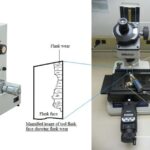Biochemistry 3 Views 1 Answers
Sourav PanLv 9December 13, 2024
How glycolysis works?
How glycolysis works?
Please login to save the post
Please login to submit an answer.
Sourav PanLv 9May 15, 2025
Glycolysis works by breaking down one molecule of glucose (a six-carbon sugar) into two molecules of pyruvate (three carbons each). This process involves ten enzyme-catalyzed reactions that include phosphorylation, isomerization, and cleavage. Energy is released in the form of ATP and NADH during specific steps. Glycolysis can occur under both aerobic and anaerobic conditions, providing ATP to the cell.
0
0 likes
- Share on Facebook
- Share on Twitter
- Share on LinkedIn
0 found this helpful out of 0 votes
Helpful: 0%
Helpful: 0%
Was this page helpful?




